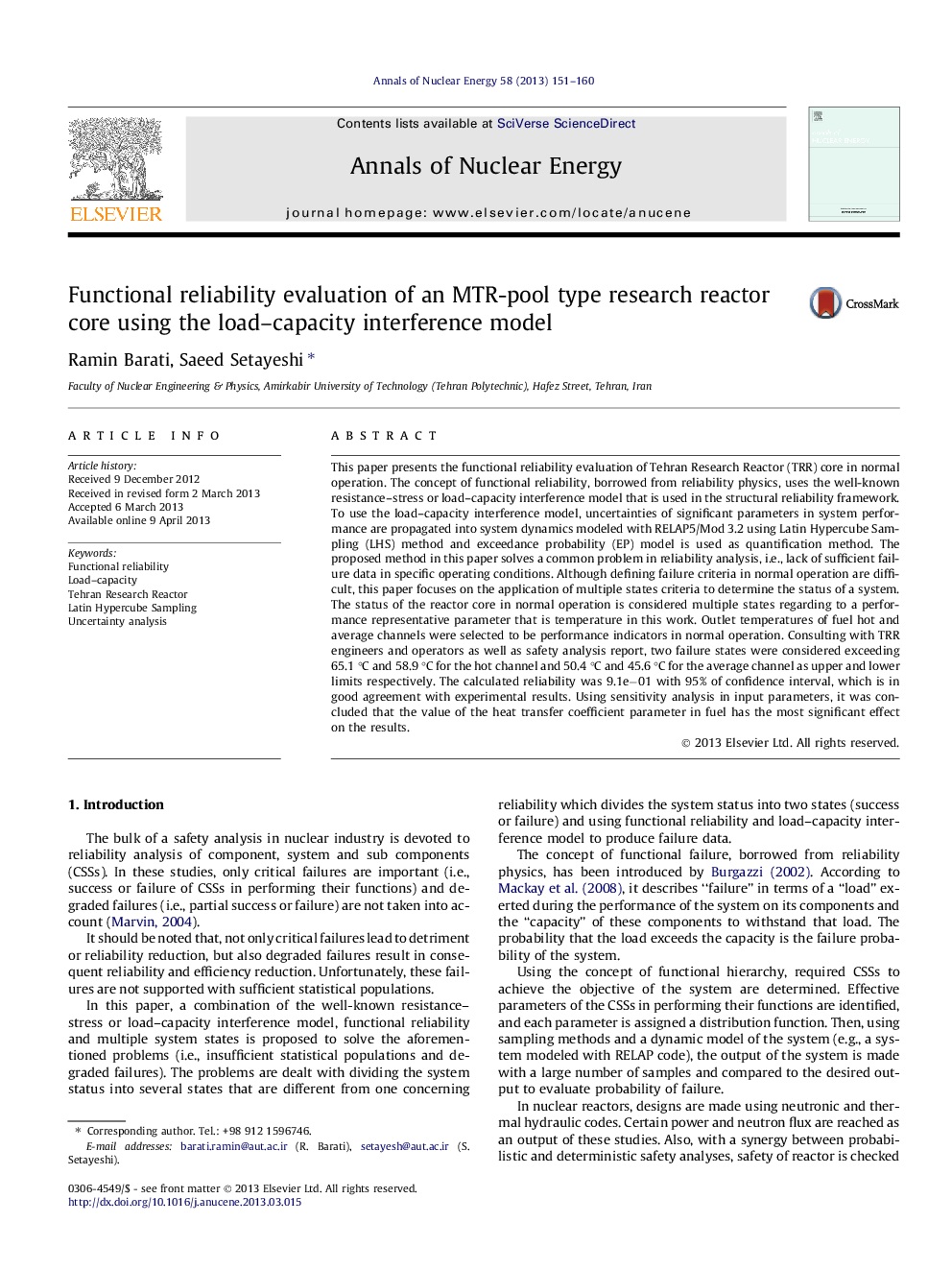| Article ID | Journal | Published Year | Pages | File Type |
|---|---|---|---|---|
| 1728607 | Annals of Nuclear Energy | 2013 | 10 Pages |
•Load–capacity concept is used for reliability evaluation.•Functional Reliability is evaluated in normal operation.•Status of reactor core in normal operation is considered as multiple states.•Latin Hypercube Sampling is used for sampling in uncertainty propagation.•Core heat transfer coefficient is identified as the dominant parameter.
This paper presents the functional reliability evaluation of Tehran Research Reactor (TRR) core in normal operation. The concept of functional reliability, borrowed from reliability physics, uses the well-known resistance–stress or load–capacity interference model that is used in the structural reliability framework. To use the load–capacity interference model, uncertainties of significant parameters in system performance are propagated into system dynamics modeled with RELAP5/Mod 3.2 using Latin Hypercube Sampling (LHS) method and exceedance probability (EP) model is used as quantification method. The proposed method in this paper solves a common problem in reliability analysis, i.e., lack of sufficient failure data in specific operating conditions. Although defining failure criteria in normal operation are difficult, this paper focuses on the application of multiple states criteria to determine the status of a system. The status of the reactor core in normal operation is considered multiple states regarding to a performance representative parameter that is temperature in this work. Outlet temperatures of fuel hot and average channels were selected to be performance indicators in normal operation. Consulting with TRR engineers and operators as well as safety analysis report, two failure states were considered exceeding 65.1 °C and 58.9 °C for the hot channel and 50.4 °C and 45.6 °C for the average channel as upper and lower limits respectively. The calculated reliability was 9.1e−01 with 95% of confidence interval, which is in good agreement with experimental results. Using sensitivity analysis in input parameters, it was concluded that the value of the heat transfer coefficient parameter in fuel has the most significant effect on the results.
